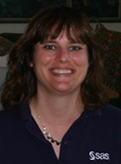|
Conference Workshops offer the bonus of additional educational experiences for SESUG Conference attendees. We have talented, recognized, and experienced instructors prepared to share their knowledge in a series of half day sessions. SESUG is scheduling eight workshops this year. Six are on Sunday, October 23 and two more are in the afternoon on Tuesday, October 25. Covering a wide variety of topics and skill levels, these 4-hour workshops will appeal to everyone interested in exceptional in-depth training. Please note that workshops are an extra fee event at SESUG.
| Early Online Registration Fee $125 |
| Regular Onsite Registration $150 |
| Administrative Fee for Workshop Only $25 (no conference registration) |
 Workshop # 1: Mike Molter
Workshop # 1: Mike Molter
Scheduled Time: Sunday 8:00 am – 12:00 pm
Workshop Title: Tagsets and the Ultimate Control Over Your ODS Output
Workshop Abstract:
“Congratulations! Today is your day. You’re off to Great Places! You’re off and away!” Though Dr. Seuss was undoubtedly not speaking of ODS tagsets when he wrote the book Oh, the Places You’ll Go!, several of its excerpts apply as we attempt to navigate through uncharted waters of SAS output.
If the phrase “uncharted waters” seems like an unusual choice of words to describe SAS output, we need to look no further for an explanation than the markup produced by an ODS destination such as HTML and ask the question, “how did that get there?”. This workshop will answer that question and many like it as we discover how markup is produced in an ODS world.
The output markup is nothing more than plain text. In theory, it could be created with familiar DATA step reading, manipulation, and writing capabilities. On the other hand, by executing procedure code inside an ODS destination like HTML, the markup appears from nowhere through a process buried in SAS’s source code that blurs the line between analysis and output. Customized markup isn’t an option.
That’s where the tagset comes in. “You have brains in your head. You have feet in your shoes. You can steer yourself any direction you choose. You're on your own. And you know what you know. And YOU are the guy who'll decide where to go.”
In this workshop we’ll see how the tagset allows us to grab hold of the wheel and write the markup file with the same control that we have with the DATA step. Rather than a blur of analysis and display, we’ll see the output process as the familiar combination of data collection, manipulation, and writing. We’ll see the tagset as our key into this process.
This flexibility has its challenges. “You’ll get mixed up, of course, as you already know. You’ll get mixed up with many strange birds as you go.” Though the process sounds like that of a DATA step, tagsets don’t read data sets. While some of the data manipulation functionality is the same, the timing of code execution is also unfamiliar. These challenges and many more will be addressed throughout the workshop, using the DATA step for guidance where possible.
Up until now, with SAS output we’ve been steering the boat along the shoreline. Now it’s time to take it out to the open sea. Oh the places you’ll Go!
 Top
Top
 Workshop # 2: Michelle Buchecker
Workshop # 2: Michelle Buchecker
Email:
Michelle.Buchecker@sas.com
Scheduled Time: Sunday 8:00 am – 12:00 pm
Workshop Title: Understanding Why Your Macros Don’t Work
Workshop Abstract:
This brain-teasing seminar will discuss the behind the scenes workings of the macro facility and explain why macro variables you thought would resolve don't, why you need an extra period or four after a macro variable reference, why you care about the difference between %LET and CALL SYMPUT, and what all those extra ampersands are for. Some macro knowledge recommended before attending this seminar.
 Top
Top
 Workshop # 3: Arthur Li
Workshop # 3: Arthur Li
Scheduled Time: Sunday 8:00 am – 12:00 pm
Workshop Title: The Fundamentals of DATA Step Programming
Workshop Abstract:
A common befuddlement often facing beginning SAS programmers is that the SAS dataset that they create is not what they intended to create; i.e. there are more or less observations than intended or the value of the newly-created variable was not retained correctly. These types of mistakes are most commonly committed because programming novices learn SAS language syntax without understanding the fundamental SAS programming concepts. In this seminar, the students will learn how DATA step programming operates, step by step, by way of providing various examples. This seminar will serve as a bridge between SAS beginners and those that are at the intermediate level.
Outline:
1. The Essence of DATA Step Programming. The essence of DATA step programming is to understand how SAS processes the data during the compilation and execution phases. Students will be exposed to what happens “behind the scenes” while creating a SAS dataset. The students will learn how a new dataset is created, one observation at a time, from either a raw text file or an existing SAS dataset, to the program data vector (PDV) and from the PDV to the newly-created SAS dataset. This section will also cover the SUM and RETAIN statements.
2. The By-Group Processing in the DATA Step. The by-group processing is commonly used in handling longitudinal data. For longitudinal data, sometimes it is useful to be able to identify the beginning or end of measurement for each subject. This can be accomplished by using the BY-group processing method. In this section, students will learn how the FIRST.VARIABLE and LAST.VARIABLE are created in the PDV and explore various types of applications from by-group processing.
3. Looping. Using the explicit loop can help to execute certain SAS statements repeatedly. Students will learn how to construct an explicit loop by using the DO, DO WHILE, or DO UNTIL statements. Understanding how each variable within the loop is created in the PDV is essential to creating a successful loop. In this section, students will be exposed to various applications by using loops.
4. Array Processing. Utilizing array processing allows us to reduce the amount of coding in the DATA step. Similar to previous sections, students will be exposed to what happens in the PDV during the array processing. There is a wide range of applications in using loop structures with ARRAY processing, such as recoding missing values for a list of variables, transforming datasets, etc.
 Top
Top

Workshop # 4: Christianna Williams
Scheduled Time: Sunday 1:00 pm – 5:00 pm
Workshop Title: Queries, Joins and WHERE clauses, Oh My!! Demystifying PROC SQL®
Workshop Abstract:
Subqueries, inner joins, outer joins, Cartesian products, HAVING expressions, Set operators, INTO clauses… Just the terminology of SQL can be rather daunting for SAS programmers raised on getting the DATA step to do our bidding for data manipulation. Not to mention the profusion of commas and complete dearth of semi-colons found in a PROC SQL step! Nonetheless, even the most die-hard DATA Step programmers must grudgingly acknowledge that there are some tasks – such as the many-to-many merge or the “not-quite-equi-join” – that would require Herculean effort to accomplish with DATA steps but can be achieved amazingly concisely, even elegantly, using PROC SQL. This workshop will present a series of increasingly complex examples to illustrate the function of each of PROC SQL’s clauses, with particular focus on problems that would be difficult to solve with “traditional” SAS code. And after all, PROC SQL is part of Base SAS; so, though you may need to learn a few new keywords to become an SQL wizard, no special license is required!
 Top
Top
 Workshop # 5: Nate Derby
Workshop # 5: Nate Derby
Scheduled Time: Sunday 1:00 pm – 5:00 pm
Workshop Title: Analysis of Unlikely Event Data
Workshop Abstract:
It doesn't have to be completely rare like earthquakes! Component failures and disease incidents can be up to 5% or so.
Analyzing rare events like disease incidents, natural disasters or component failures requires specialized
statistical techniques since common methods like linear regression (PROC REG) are inappropriate. In this basiclevel
course, we’ll first explain what it means to use a statistical model, then explain why the most common one
(linear regression) is inappropriate for rare events. Then we’ll introduce statistical models that are appropriate for
rare events: Poisson regression, negative binomial regression, zero-inflated Poisson regression and zero-inflated
negative binomial regression – all using PROC GENMOD or PROC COUNTREG.
The course will be taught at a very basic level in language understandable to the non statistician, using
case examples. SAS/STAT is required to use the tools taught in this course.
 Top
Top
 Workshop # 6: Michelle Buchecker
Workshop # 6: Michelle Buchecker
Email:
Michelle.Buchecker@sas.com
Scheduled Time: Sunday 1:00 pm – 5:00 pm
Workshop Title: Fear SAS® Graphs No More
Workshop Abstract:
Admit it, you have a juicy little secret. You love writing SAS code, well, everything except PROC GCHART that is! Have you seen the size of the documentation for that? So you sneak away to Excel, manually input the number from PROC MEANS/SUMMARY, print it off and hope no one is the wiser. And then do it all over again next month with new numbers. I know, I've been there (and I work for SAS... shhh!!!). This seminar will show you how to break those chains and use SAS Enterprise Guide as an easy point and click interface to create the graph. This also makes the process repeatable AND you can still make use of your wonderful SAS programming skills to customize titles and footnotes.
 Top
Top
 Workshop # 7: Taylor Lewis
Workshop # 7: Taylor Lewis
Scheduled Time: Tuesday, 1:00 pm – 5:00 pm
Workshop Title: Analyzing Complex Survey Data in SAS
Workshop Abstract:
This course introduces the statistical and syntactical modifications necessary when analyzing complex survey data. Specifically, attendees will gain an understanding of when and how to employ the SURVEY family of SAS procedures*for instance, PROC SURVEYMEANS and PROC SURVEYREG. “Complex” implies data containing one or more of the following features: stratification, clustering, unequal respondent weights, or finite population correction factors. Each of these features is presented with illustrative examples demonstrating why in practice it is often beneficial or necessary to deviate from the more familiar simple random sampling design.
SAS 9.2 allows users to create and/or provide replicate weights to approximate survey estimate variability. A thorough discussion of these techniques and how to implement them is included. Also, concepts of domain estimation are discussed, when one restricts analysis to a subset of the data.
 Top
Top
 Workshop # 8: Kirk Lafler and Mira Shapiro
Workshop # 8: Kirk Lafler and Mira Shapiro
Scheduled Time: Tuesday, 1:00 pm – 5:00 pm
Workshop Title: An Introduction to Point-and-click Programming Using SAS® Enterprise Guide
Workshop Abstract:
This workshop is designed to teach the basics of the SAS System emphasizing the power of the graphical user interface (GUI) features found in Enterprise Guide. It serves as an excellent foundation of knowledge without the need to learn complicated programming techniques. Acquire a working knowledge of the GUI front-end interface along with the built-in wizards to perform basic reporting and analytical tasks; access a variety of input data types; subset, order, group, summarize, and transpose data; join two or more tables together; export results to Excel, Word, HTML, and PDF; and organize, view and manage projects visually.
Attendees learn how to use Enterprise Guide’s GUI front-end to construct and execute programs using the SAS System; read and process text, ASCII, comma- and tab-delimited, and Excel data; format existing variables and create new calculated variables; create temporary and permanent SAS data sets; subset, order and group data; create detail, summary, tabular and statistical reports; perform conditional programming logic; manipulate numeric and character data; combine data using concatenation, match-merging, and joining techniques; and manage SAS data sets and projects for added power and flexibility.
 Top
Top
|